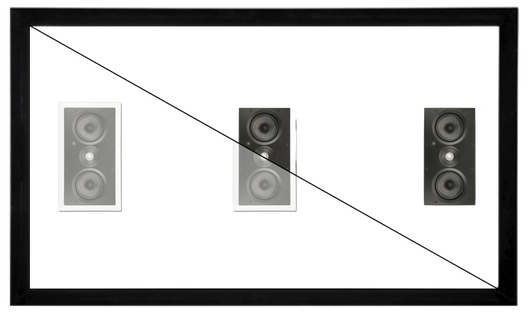In the world of architecture and design, the concept of acoustically transparent walls has gained significant attention in recent years. These innovative walls are designed to allow sound to pass through while maintaining a physical barrier, creating a unique and versatile solution for various applications. In this article, we will delve into the realm of acoustically transparent walls, exploring their benefits, uses, and the technology behind them.

What are Acoustically Transparent Walls?
Acoustically transparent walls, also known as sound-transparent or acoustic mesh walls, are designed to permit the passage of sound waves while maintaining a physical barrier. This is achieved through the use of specialized materials, such as acoustic mesh, perforated panels, or other sound-transparent materials. These walls can be used in a variety of settings, including homes, offices, theaters, and recording studios.
Benefits of Acoustically Transparent Walls
The benefits of acoustically transparent walls are numerous and varied. Some of the key advantages include:
- Improved Acoustics: By allowing sound to pass through, acoustically transparent walls can significantly improve the acoustics of a room. This is particularly beneficial in applications where high-quality sound is essential, such as recording studios or theaters.
- Enhanced Versatility: Acoustically transparent walls can be used to create flexible and adaptable spaces. For example, a single room can be divided into multiple areas, each with its own unique acoustic properties.
- Increased Natural Light: Acoustically transparent walls can be designed to allow natural light to pass through, reducing the need for artificial lighting and creating a more pleasant and welcoming environment.
- Aesthetically Pleasing: Acoustically transparent walls can be designed to be visually appealing, with a range of materials and finishes available to suit various architectural styles.
Applications of Acoustically Transparent Walls
Acoustically transparent walls have a wide range of applications, including:
- Home Theaters: Acoustically transparent walls can be used to create a home theater system that provides an immersive and engaging audio experience.
- Recording Studios: Acoustically transparent walls are often used in recording studios to create a controlled and high-quality acoustic environment.
- Offices: Acoustically transparent walls can be used to create private offices or meeting rooms that maintain a level of acoustic isolation while still allowing for natural light and sound to pass through.
- Theaters and Performance Venues: Acoustically transparent walls can be used to create a more immersive and engaging experience for audiences, while also providing a high level of acoustic quality.
Technology Behind Acoustically Transparent Walls
The technology behind acoustically transparent walls is based on the use of specialized materials that allow sound to pass through while maintaining a physical barrier. Some of the key materials used include:
- Acoustic Mesh: Acoustic mesh is a type of material that is designed to allow sound to pass through while maintaining a physical barrier. It is often used in acoustically transparent walls to provide a high level of acoustic transparency.
- Perforated Panels: Perforated panels are another type of material used in acoustically transparent walls. These panels feature small holes or perforations that allow sound to pass through, while also providing a level of physical isolation.
- Sound-Transparent Materials: Sound-transparent materials, such as glass or polycarbonate, can be used to create acoustically transparent walls. These materials allow sound to pass through while maintaining a high level of optical clarity.
Design Considerations
When designing acoustically transparent walls, there are several key considerations to keep in mind. These include:
- Acoustic Performance: The acoustic performance of the wall is critical, and the design should take into account the specific acoustic requirements of the application.
- Material Selection: The selection of materials is critical, and the design should consider the acoustic properties, durability, and aesthetics of the materials used.
- Structural Integrity: The structural integrity of the wall is essential, and the design should ensure that the wall can withstand various loads and stresses.
FAQ
- What is the difference between acoustically transparent walls and soundproof walls?
Acoustically transparent walls are designed to allow sound to pass through, while soundproof walls are designed to block sound. - Can acoustically transparent walls be used in residential applications?
Yes, acoustically transparent walls can be used in residential applications, such as home theaters or music practice rooms. - Are acoustically transparent walls expensive?
The cost of acoustically transparent walls can vary depending on the materials and design used. However, they can be a cost-effective solution in certain applications. - Can acoustically transparent walls be used outdoors?
Yes, acoustically transparent walls can be used outdoors, such as in outdoor theaters or performance venues. - How do acoustically transparent walls affect the overall aesthetic of a space?
Acoustically transparent walls can be designed to be visually appealing, with a range of materials and finishes available to suit various architectural styles.
Conclusion
Acoustically transparent walls are a revolutionary solution for applications where high-quality sound is essential. By allowing sound to pass through while maintaining a physical barrier, these walls can create a unique and versatile space that is both functional and aesthetically pleasing. With their numerous benefits, including improved acoustics, enhanced versatility, and increased natural light, acoustically transparent walls are an ideal solution for a range of applications, from home theaters to recording studios and beyond. As technology continues to evolve, it is likely that we will see even more innovative and effective solutions for acoustically transparent walls, further expanding their potential and possibilities.
Closure
Thus, we hope this article has provided valuable insights into Acoustically Transparent Walls: Revolutionizing Sound and Space. We appreciate your attention to our article. See you in our next article!